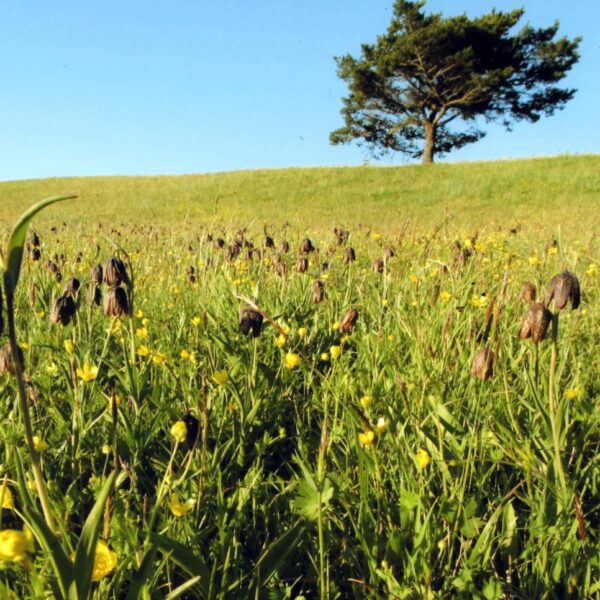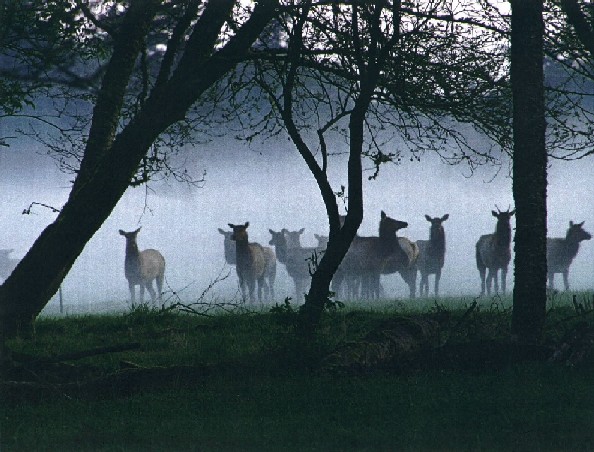Conservation
Ours is a common goal: To conserve and protect land for current and future generations.
NCLC was founded on the belief that we are all part of Oregon’s coastal landscape: the people, wildlife, plants, water, open space, and infrastructure. We strive to build strong, lasting community relationships that not only build NCLC’s capacity for conservation but build the community’s capacity for stewardship of the Oregon Coast.
Whether discussing with property owners the economic benefits of protecting land, assisting other organizations to preserve ecologically sensitive areas, or offering public symposia on unique aspects of the coast, NCLC holds conservation at its core.
NCLC’s conservation strategy focuses on creating a system of green infrastructure that facilitates the connectivity needed to support wildlife populations and ecological processes. It is centered around three main elements that serve as focal points of our coastal conservation work. These pillars are habitat connectivity, climate resiliency, and community conservation.
View our 20-Year Conservation Plan, adopted in 2024.
Climate
In the natural world, being climate resilient means that ecosystems have the capacity to cope with and change in response to the disturbances and other challenges that climate change brings, without losing their basic structure, diversity, or the functions they serve in the larger environment.
The life cycles of our local plant and animal communities have been shaped over time by seasonal weather patterns. However, rising air and water temperatures, increased frequency of extreme heat events, stronger winter storms, rising seas, and more extreme seasonal droughts are impacting and disrupting these species and communities.
If we do not work to protect our more resilient landscapes and try to improve the ability of our region to withstand and adapt to the challenges of climate change, we face not simply a changing environment but the loss of species and the collapse of these natural systems as well. With this in mind, the habitats we are focusing on are marine, forests, streams, wetlands and estuaries that provide critical ecosystem services, and particularly those areas where these priority habitats connect, interact or overlap and provide added benefits, such as carbon sequestration.
Connectivity
We are dedicated to conserving the diversity of habitats that exist within our service area and maintaining connectivity between them. Connectivity is important for the health and function of ecosystems and the species they support. Most, if not all, remaining blocks of high-quality, natural habitat exist as a patchwork, often held together by unprotected areas that are essential to the movement of species and the natural processes that sustain these systems.
NCLC works within a green infrastructure model that prioritizes habitat connectivity at a landscape scale. This means we work to conserve the natural ecological systems and human-built elements that act as living infrastructure, providing ecological services, such as clean, dependable air and water, flood mitigation, climate change mitigation, and other benefits that flow from nature to people. One way that we do this is by prioritizing lands next to existing public and protected areas, such as those NCLC already holds, helping to create larger corridors of natural habitat and keeping these areas from becoming isolated islands. Together these connected lands can better contribute to a fully functioning landscape where healthy communities of people, plants and wildlife all thrive.
Community
We understand coastal conservation must include and celebrate diversity amongst people, plants and wildlife. NCLC strives to be a local and regional leader by connecting people with place and providing learning and stewardship opportunities, as well as equitable and just access to land. To this end, NCLC is investing time and resources to broaden our network of partners and intentionally foster an inclusive, empathetic, diverse and equitable culture to better understand and serve the community.
We are committed to supporting equitable and just conservation, including facilitating indigenous peoples’ reconnection and access to their homelands; protecting underserved/underrepresented communities’ access to clean drinking water; offering places where children can connect to nature; and facilitating communities’ desires to create parks and open space. While some of these values cannot be mapped, quantified or ranked within our conservation plan, they are a core part of our overall approach to evaluating our conservation efforts. To help with this, NCLC is including wealth inequality, demographic and census data, and other mapping for reference within our plan.
Conserved Lands
View all of our conservation projects using a handy map to browse locations in your area.
Conservation Strategies
Whether NCLC is the eventual owner of a property or not, we see our role in helping to conserve and protect land on the Oregon Coast forever as being key to achieving our mission. Here are a few strategies we use in our conservation efforts:
Fee Title Ownership
Land is either donated to NCLC by the landowner, or purchased outright by NCLC with funding coming from both private and public sources through individual donations and acquisition grants.
Easement
A property owner retains ownership of the land, but either donates or sells the development rights for the land to NCLC. A conservation easement is attached to the deed of the property so that even if ownership is transferred, the easement on the property remains in place. When land is owned outright by a land trust such as NCLC, an easement is not necessary to protect the land in perpetuity. However, sometimes easements are still placed on lands we purchase as conditions of the acquisition. Easements on NCLC owned land are not held by NCLC, but by other organizations.
Fee Title Transfer
Sometimes it is determined that the best outcome for a property is for it to be in public ownership. Yet it is not always possible for a public entity—such as a a city, a state or national park, or a wildlife refuge—to facilitate the land acquisition itself. In such cases, NCLC can step in to take care of the acquisition. We then transfer ownership to the public entity when they are ready to receive it. Sometimes this process takes many years, and sometimes NCLC has owned a property for less than a minute!
Facilitation
NCLC provides facilitation services to partners working toward the conservation of a piece of land that will eventually end up in public ownership. This can include helping to facilitate negotiations between partners, raising public awareness about the importance of conserving a piece of land, assisting with grant writing and acting in an advisory capacity for the partners involved.
Caring for Conserved Lands
For each property NCLC owns, our Stewardship Director conducts a baseline assessment of the land that includes descriptions of habitat and wildlife, maps and photo points. She then develops a stewardship plan for the property, and with the assistance of staff and stewardship committee volunteers with annual site visits and monitoring reports. For properties where more active ecological restoration is needed to control invasive plants and establish native habitat, we use a combination of grant funding and volunteer help to get the work done.
Easement properties are monitored annually to ensure that the conditions of the easement are being met.





